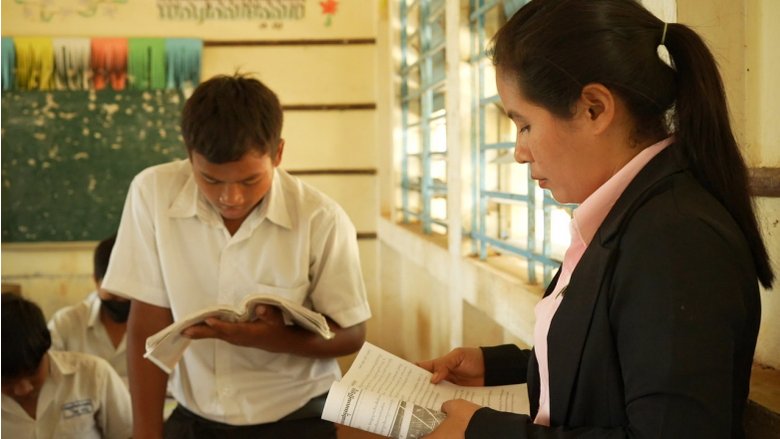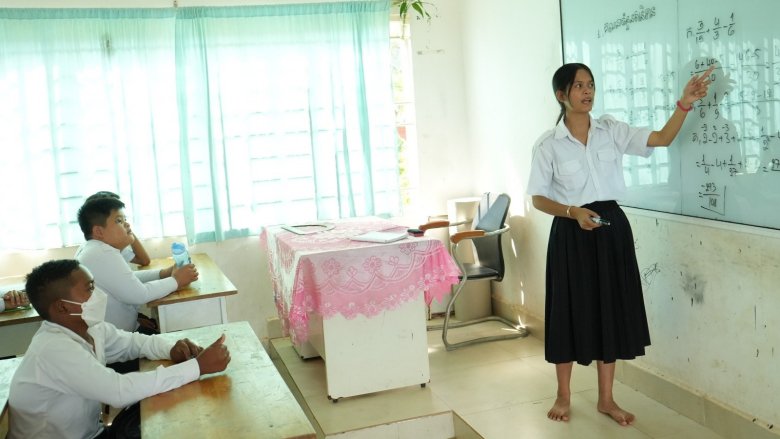“In the old days, we used to punish students by making them copy texts a hundred times,” recalls Ly Yanny, Principal of Sam Pan Secondary School in Kandal province. “We wouldn’t let them into school if they were late, and would scold them if they misbehaved. We didn’t help students continue their studies, but rather encouraged them to drop out if they did not perform or behave well.”
Yanny has served as a teacher and school principal for over 30 years. In the past, he applied strict methods in an attempt to make students good enough to compete with pupils from other schools, locally and nationwide. This approach however led to a decrease in the number of students over the years, falling from about 500 to 240 pupils, as families sent their children to other schools nearby. Yanny realized that if the numbers continued to drop, his school would be at risk of closure. He sought advice from other schools, which were supported by the World Bank’s Secondary Education Improvement Project.
The advice he received? Rather than punishing the students, “engage them more in teaching and learning activities, understand their living conditions, work with parents and the community to better support them, and improve the quality of teaching and the school environment to ensure that children want to come to school”. The advice has helped the school attract its students back, with the number of new enrollments climbing to about a hundred this year.
Phon Chanthoern, a teacher of history and geography at Prak Taten High School, also used punishment with students, believing this would make them study harder and pay more attention to her teaching. But it did not produce the results that she wished. She came to realize that whenever she did this, students tried to listen but were frightened. They could not concentrate on their lessons.
Two years ago, Chanthoern started to use a student-centered teaching method. Rather than lecturing the class, she gave her students topics to discuss in groups, and then present to the class. She also now begins her classes by asking students — who often come from poor families — to share their situations. This new way of teaching helps them learn more and enjoy the class, and also builds better relations between students and teachers.
One of the education project’s priorities was to reduce the number of kids dropping out of school by supporting students from poor families or abusive households. Ngiem Sidara, Principal of Hun Sen Veal Rinh High School in Sihanouk province, goes with his teachers to the homes of students who miss school often or have poor grades, to identify the root causes of these problems. He says that understanding the conditions of students with difficulties is very important. Some parents do not want their children to go to school because they need them to help earn money, while some students experience abuse at home.
“Sometimes we spend a long time persuading parents, particularly in abusive families, to let their children go back to school,” he said. “We tell them that if they want their children to be better off, they should allow them to continue their studies. Then usually, they agree. But in some cases, we need to bring along the village or community chief or a monk to talk with their parents before we are able to get the kids back to school.”
Yanny, Sidara and Chanthoern are among nearly 600 heads of schools and more than 2,200 teachers who attended Leadership and Teacher Upgrading Programs under the project. These programs have not only changed teaching and learning practices, but also the way schools are run.
The project has directly benefitted almost 70,000 students of which more than 34,600 are females in 100 targeted schools. Like Sam Pan Secondary School, the project has also spillover to over 387,000 students in non-targeted primary and secondary schools



